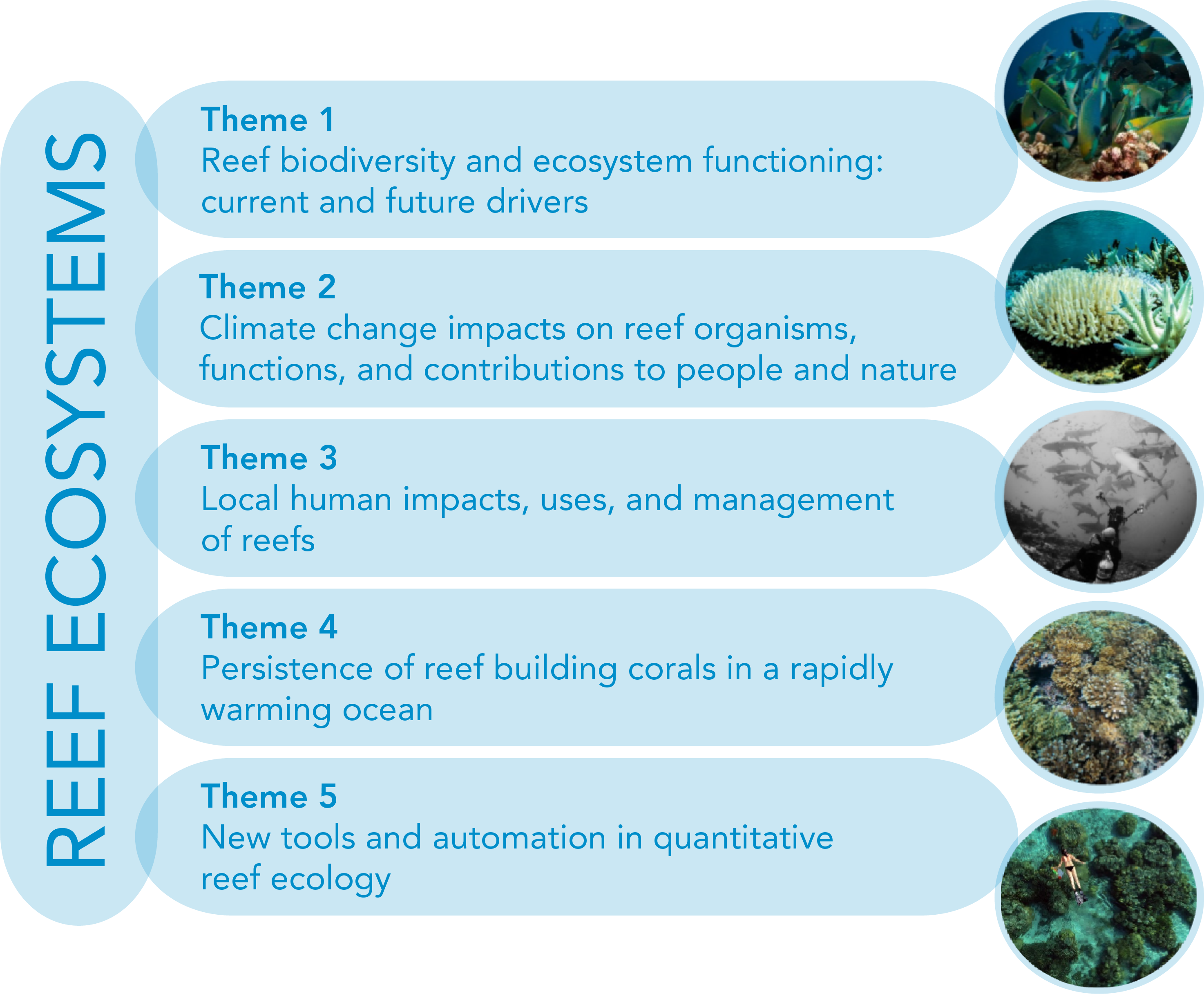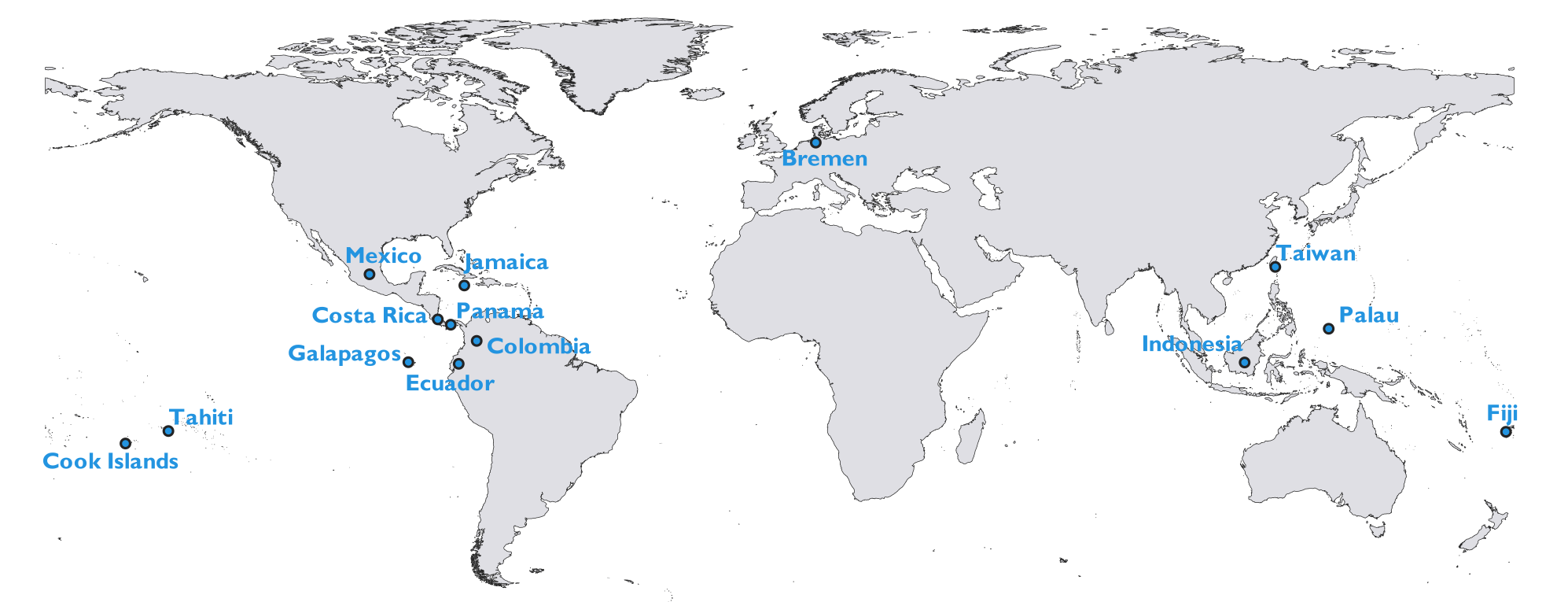Dieser Text ist zur Zeit nur auf Englisch verfügbar...

(Photos by: Mark Priest, Peter J Mumby, Tom Vierus, Maria Alejandra Herrera, Pia Lewin
Overarching research goal
We aim to understand the functioning of present and future reef systems. We investigate what promotes or supports reef integrity, biodiversity, and the benefits reefs provide to people. We ask why and how are reefs changing and how are these changes reconfiguring reef-human connections. We study what underpins the natural survival of reef building corals in a changing world whilst embracing the emergence and persistence of non-coral dominated reefs. With this knowledge we seek to orient both conventional and proactive strategies of reef conservation and restoration.
Our research locations

Research highlights

(1) Vincent Ripke setting up experiments on the effects of artificial feed on coral reef fishes on Green Island (Taiwan), (2) Preparation of a Pocillopora damicornis colony for measurements of Reactive Oxygen Species (ROS), and (3) P. damicornis exposed to PET microplastics at the MAREE. (Photos: 1. Vincent Ripke, 2. Sara Ousley, 3. Anna Feuring)
We investigate corals’ responses to a range of pervasive ocean pollutants including microplastics, herbicides, and sunscreen filters. We ask whether a) corals react differently to microplastics of different shapes, b) microplastics disrupt key ecological functions of corals, and c) polyps undergo high levels of stress when inspecting or ingesting microplastics. Work in this theme is carried out at the Green Island Marine Research Station, at our Marine Experimental Facility (MAREE), and is developing in further novel directions in collaboration with the Microsensor Group in the Max Planck Institute for Marine Microbiology. In the field, we have also aimed at understanding how coral reefs living in atypically turbid and polluted conditions function. In this context, we joined the research efforts of Pontificia Universidad Javeriana de Cali and Fundacion Ecomares in Varadero reef which may paradoxically be one of the best coral reefs n the continental shelf of Colombia despite being exposed to heavy industrial and sewage waste.
Research highlights


(1) Mattia Ghilardi conducting fieldwork in Palau in November 2019 to quantify carbonate excretion rates of coral reef fishes, (2) fishes were held in aquaria at the Palau International Coral Reef Centre, (3) Mattia Ghilardi and Sonia Bejarano preparing for fish collections in Palauan reefs (Photos: 1. Pia Lewin, 2. Mattia Ghilardi, 3. Stefanie Bröhl).
The faeces of 138 fish of 52 species were collected and these will be analysed to quantify their carbonate content. Ultimately, the amount of carbon produced per individual fish and per species will be calculated. Carbonate excretion rates will be compiled together with data on four more ecosystem functions sustained by fishes globally within the frame of the REEF FUTURES project. The global contributions of coral reef fishes to the carbon cycle in future tropical oceans will be predicted under realistic climate change scenarions.
Research highlights


(1) Image taken by a drone over Ngederrak reef in Palau, (2) Our great boat driver Nelson catching the drone after a flight, (3) Pia Lewin preparing for fish censuses (Photos: 1. Pia Lewin, 2. Sonia Bejarano, 3. Mattia Ghilardi).
We are interested in reconstructing the three-dimensional structure of shallow coral reefs using consumer grade-drones and photogrametry to investigate whether this relates to various ecological patterns.





